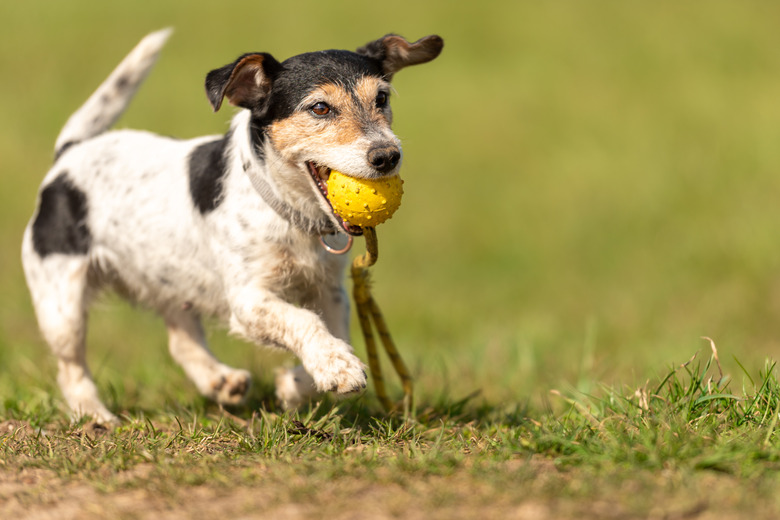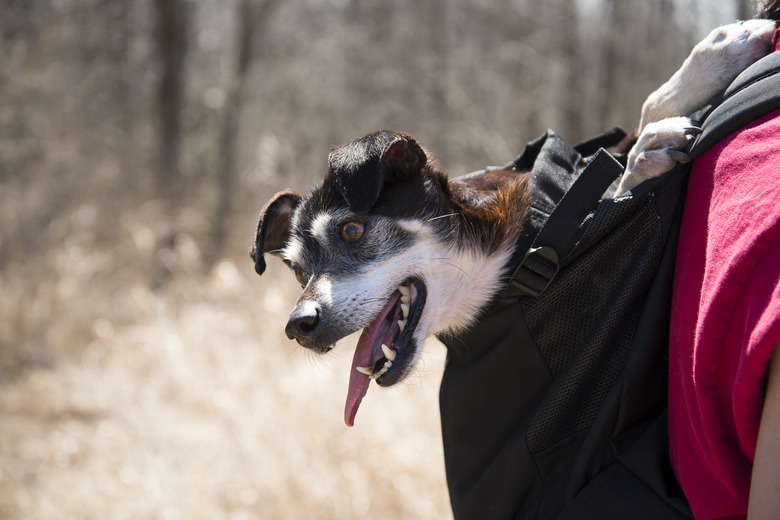Running With A Small Dog
Dogs don't just make great best friends, they've also been proven to be beneficial to one's physical and mental health and longevity. They accompany us on walks, road trips, and through life's general ups and downs.
One great way a dog can help improve their owner's health is by getting them out for exercise, including runs. And while folks tend to reserve this activity for larger breeds, many small dogs enjoy getting in on the action too. It's becoming increasingly commonplace to convert small dogs from lap warmers to running buddies. However, if you want to bring your little one out on your run, there are some tips to follow to ensure that you both have a great, fun, and rewarding exercise session.
What small dog breed is the best dog for running?
What small dog breed is the best dog for running?
Running may have once been thought of as a sport for border collies and retrievers, however many smaller breeds are fully capable of being good dog running partners. Breeds like the Jack Russell terrier are actually working dogs that were bred to have a lot of stamina, strong little legs, and an abundance of energy. These small pups pack a lot of speed and are almost always rearing to go. There are also a lot of mixed breeds aside from terriers like Chihuahua and poodles that love getting in on the action.
If you're unsure whether your dog is up for it, check with your veterinarian. They can tell you if your dog is too small or is prone to pre-existing conditions like hip dysplasia, luxating patellas, or is brachycephalic. Brachycephalic dog breeds like pugs or bulldogs can have a harder time breathing, making running a potentially tougher if not impossible form of exercise for them. But if a brachycephalic breed is only half or less of their makeup they could get an okay from the vet.
The benefits of running with small dogs
The benefits of running with small dogs
Running with a dog not only gives you a cute running buddy, but it can also give you an accountability partner. If you're dreading that run before or after work, looking into your dog's hopeful eyes might be just the thing to force those running shoes onto your feet. When it becomes a routine for the both of you, it becomes a lot easier.
Also, if you're a person that can only think about how much time they have left in their run, your adorable pal will give you something else to concentrate on. But the two of you won't be the only ones to benefit. Seeing you run with your little one might just bring joy and smiles to others on the path or alongside the lake.
High energy dogs benefit the most
High energy dogs benefit the most
Another great plus is that many small breed dogs have a seemingly endless supply of high energy. A nice run has the capability of tiring your dog out as much as it does you. In fact, many behavioral issues stem from boredom or high energy levels. So if you dog suffers from separation anxiety, nervousness, displays destructive behaviors, chews a lot, or seems to never calm down, a run might be just the activity to get them distracted and tired out.
Go slow, at least at first
Go slow, at least at first
No matter how well you know them, it's possible, especially when first starting, that you won't be able to properly judge your dog's stamina. Dogs with short legs can't run as fast as a human can, so go slow and for short distances at first to get a sense of how much and how fast they want to go. A half mile or less at a 12 minutes per mile pace or slower is best. Once you have a better idea of their capabilities, you can add or subtract mileage and speed.
Make sure not to pressure your dog. They're not like us. Telling them to "tough it out" will not get them through a run if it's something they don't want to or can't do. They've got enough internal motivation, so if they're lagging or dragging it's because they're done not because they need a pep talk.
Have a backup plan
Have a backup plan
Even when you've been running with your dog for ages, it's important to know what to do if they need to tap out early. Remember it's not just size that effects a dog's running capabilities. Anything can influence how far or fast they can go, including their energy level at that particular time on that particular day, how they're feeling, how much they've eaten, whether it's cold weather or hot weather, etc.
Make sure you're able to carry them home if they decide they're done before you can make it back. If you need to, bring a dog backpack and pop them in when they're spent. But don't keep running with them in the pack unless you want to make them very sick.
Always pay attention
Always pay attention
Whether they're behind, in front, or to the side, make sure you're always able to see your small dog and that you're consistently checking in with them. You need to be watching to see if they're too tired, injured, need water, or just need a rest.
You might need to rest or stop altogether if your dog exhibits any of the following signs: excessive panting, slowing down, a change in their normal gate, limping, or a change in their stride or speed. We know our dogs pretty well, and part of that is knowing when they're okay versus not. It's always best to go with your intuition when you're not sure. Err on the side of safety and don't push your pup if it looks like they need to rest or stop altogether. Worst case scenario: you bring them home and go out and get the rest of your mileage on your own while they sleep it off.
Don't go too far with your small dog
Don't go too far with your small dog
It's always best to avoid long distance runs with any pet. Remember your dog has smaller legs than you, and a small dog's legs are even smaller. Smaller dogs also might need more breaks than the average athlete, so make sure you're willing and able to accommodate and incorporate water and rest breaks into your run. Remember, even if you might be, your dog isn't training for the marathon here. They're just trying to have fun with you.
If you are training for a marathon or other long runs, make sure to only take your wee one out on the very shortest of your training runs. No more than one to two miles is best. If you miss them you can always carry a picture of them with you on your 10ks.
Safely running with your small dog
Safely running with your small dog
No foot magnets allowed! Many small breeds like to weave in and out of legs during walks or even when their parents are standing in the kitchen making a sandwich. It's not safe for a small dog to run off-leash. Make sure your small dog is properly leash trained before attempting a run. If your little pooch is the type that wraps their leash around you or consistently steps right in front of your step, it's almost guaranteed that they'll attempt the same behavior at a faster pace. Best to leave them at home if this is the case, to avoid injury to either party.
A non-reactive small dog makes the best running companion. In other words, leave the Napoleons at home with the foot magnets. If they're the type who will lunge or go into attack mode, running might become more of a danger than they think they are.
Injury prevention
Injury prevention
A good running partner needs to stay hydrated. Make sure you bring a water bottle for both of you. There are many water bottles made specifically for this.
There are also specific leashes for running, including some that are hands free. Though your existing leash will likely work just fine so long as it's six feet long. Whatever type of leash you have, make sure to use it. There's no telling if or when some smaller pups will get a case of the zoomies or see that squirrel that's been tormenting them for years. If this happens while they're properly attached to you, they can't get too far.
It's also best to use a harness rather than a collar. A tug on a collar might not be as problematic on a gentle walk, but if you or your small dog need to stop suddenly, a hard pull on a harness is less likely to result in an injury to their trachea.
Make sure to avoid bad weather including excessive heat. Just like on walks, a hot sidewalk or pavement can burn their feet. They can also suffer heat stroke or dehydration. You can use booties to protect your dog's paws.
Have fun on your run!
Have fun on your run!
Running with a small dog has so many benefits to both human and dog alike and is definitely possible with the right precautions and information. As long as everyone is having a good time and no one is getting hurt, there's no reason to exclude your small dog from this greatly beneficial exercise routine.



